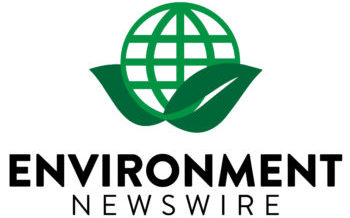CHICAGO, Sept. 23, 2020 /PRNewswire/ — There are several methods of water disinfectant and filtration, however one of them, O3 (Ozone) is a powerful oxidizing agent, which when dissolved in water, produces a broad-spectrum biocide that destroys all bacteria, viruses, and cysts.
If your machine isn’t ozone, you may not be safe.
THIS JUST IN: “The United States Military has decided to purchase atmospheric water generators that utilize ozone as their preferred water disinfectant system. AWG-Water has received a contract from the military to provide these units.” Jeff Tokayer, Director of Sales, AWG-Water.com, suppliers of ozone atmospheric water generators to branches of the Department of Defense.
There are several common water filtration systems incorporated into all systems that make drinking water from air:
1. Charcoal (Carbon Column)
2. Reverse Osmosis (RO)
3. Ultraviolet Light (UV)
4. Chlorine (CL)
1. Charcoal filters are effective in improving the taste of water and eliminating a variety of pollutants. However, algae, bacteria, and other microbials can flourish causing bad smells and dangerous toxicity, i.e. legionella. A common treatment to smelly charcoal filters is the addition of chlorine.
“Ironically, the city’s corrective measure—adding more chlorine without addressing other underlying issues—created a new problem: elevated levels of total trihalomethanes (TTHM), cancer-causing chemicals that are by-products of the chlorination of water.” nrdc.org
Unfortunately, chlorine significantly reduces the effectiveness of the charcoal filter. Charcoal water filters must always be incorporated with a more comprehensive water treatment system. (Charcoal) filters require periodic replacement and can harbor sulfate-reducing bacteria, h20care.com.
2. The World Health Organization states reverse osmosis water warning, citing health risks from drinking demineralized water. While RO systems remove water impurities, they also remove many of the beneficial minerals such as calcium and magnesium. Who.com
3. UV is effective in killing microbials, however,
“Pre-filtration is required to remove color, turbidity, and particles that shield microorganisms from the UV source. Water that contains high mineral levels can coat the lamp sleeve and reduce the treatment effectiveness. Therefore, pretreatment with a water softener or phosphate injection system may be necessary…” water-research.net This could make UV unreliable.
Controlling microbials is essential for safety and consistency.
Pollutants from heavy metals and other contaminants may require the ingestion of large amounts of water over a long time and can impact the behavior or efficiency of its users.
Microbial infestation can immediately incapacitate people (diarrhea/dysentery) therefore microbial elimination is of crucial concern and importance.
The Environmental Protection Agency encourages the application of reliable and effective Ozone(O3) in all internal reservoirs of Atmospheric Water Generators.
OZONE Advantages – EPA.GOV
- Ozone is more effective than chlorine in destroying viruses/bacteria.
- The ozonation process utilizes a short contact time and is effective within seconds.
- There are no harmful residuals that need to be removed after ozonation because ozone decomposes rapidly.
- Ozone is generated within the water generating process, so there are fewer safety problems associated with shipping/handling.
- Ozonation elevates the dissolved oxygen(DO) concentration in drinking water.
If your machine isn’t ozone, you may not be safe.
Visit awg-water.com for more information
Contact:
Adir Alexander
202-930-2447
247765@email4pr.com
SOURCE AWG Research Labs
